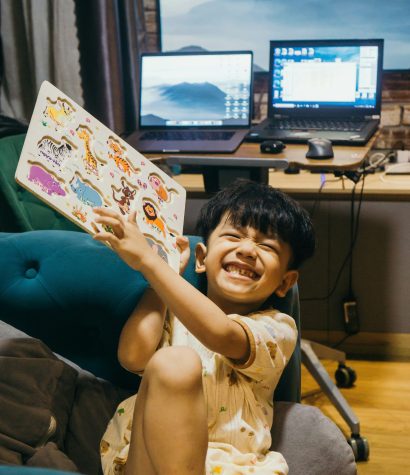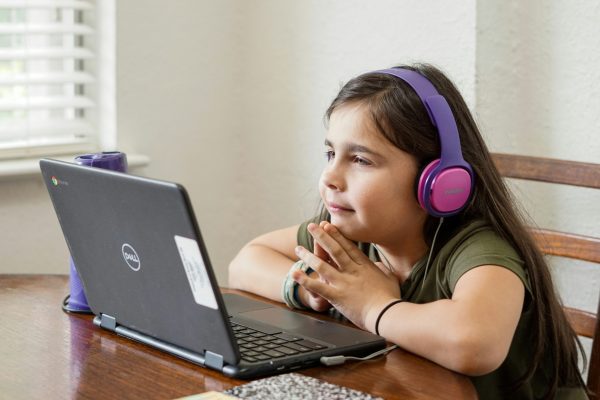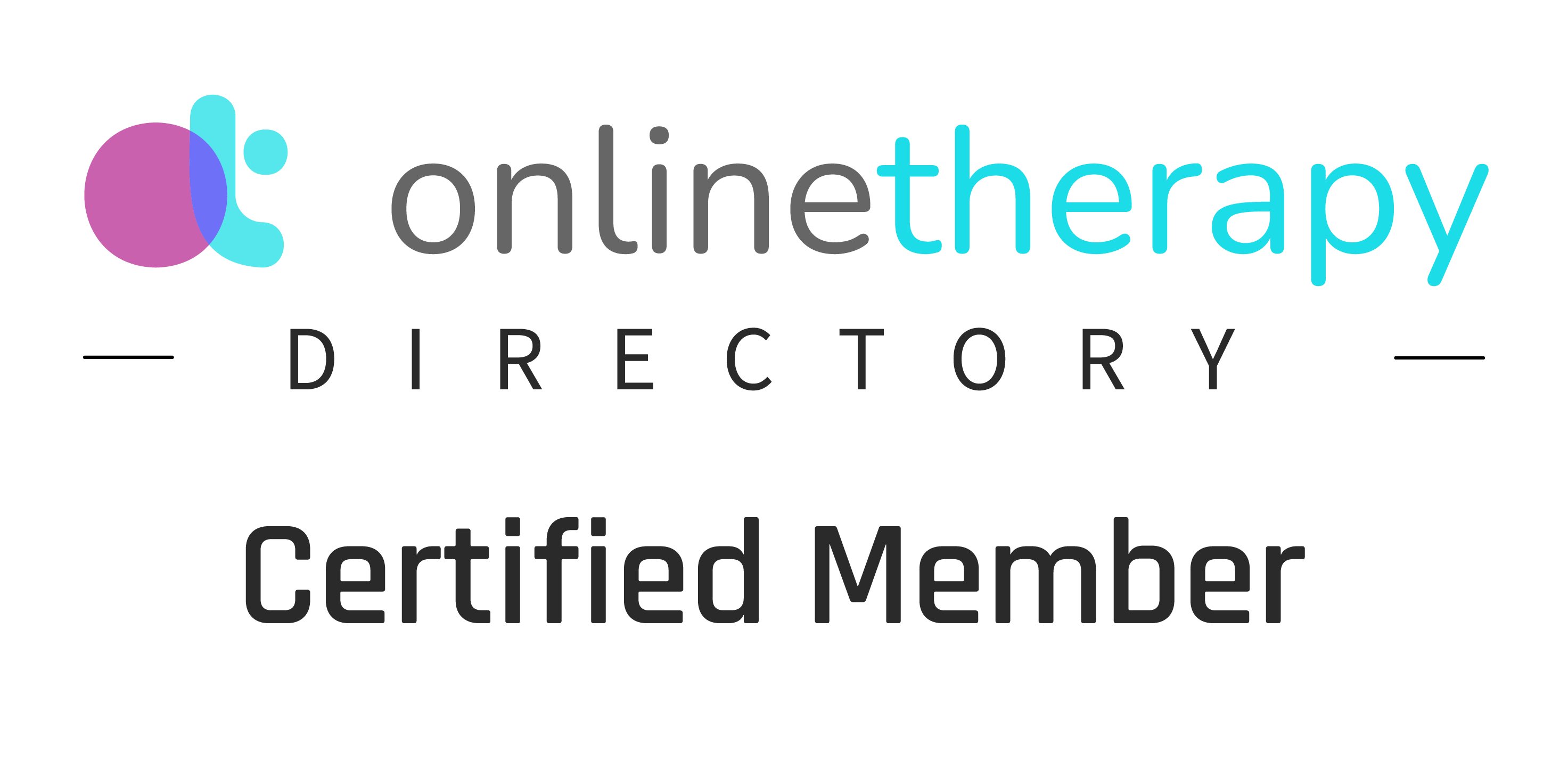Is Virtual Play Therapy Effective for Children? You Bet!
You may be wondering if therapy is right for your child—but maybe it’s been hard to find the right therapist nearby, or your schedule makes in-person sessions tricky. Virtual play therapy might seem a little odd at first (how can therapy work through a screen?), but I would invite you to hold off on your reservations. As a child therapist, I’d love to show you how virtual sessions can be just as meaningful, engaging, and effective as in-person ones.
Let’s take a look at how it works and what you can do to help set your child up for success.

Step 1) Creating a Safe and Private Space
One of the first things I encourage parents to do is help their child find a quiet, private spot for sessions. If your child has their own room, that’s often the best place to start. It’s familiar and comfortable, which helps them feel at ease. You can help protect their privacy by asking other family members not to interrupt, placing a sign on the door like “In Session – Please Do Not Disturb”, or even using a white noise app outside the room.
Some children like to keep a “therapy box” with drawings, toys, or other items we’ve used in sessions. I leave this up to the child—some kids love showing parents what they’ve created, and their parents are equally excited to be included. It’s a beautiful way to support the connection between you and your child, and to let you witness their growth firsthand. That parent-child bond is something we use intentionally in therapy, as it can be a powerful tool for healing.
2) Getting the right supplies
When you come in person for play therapy you might see a lot of toys and options for kids to choose from which is always exciting for them. Parents sometimes worry that they need to provide all these new toys in order for therapy to work. Good news—you don’t need to go out and buy anything fancy! In our first session, I usually ask your child to show me some of their favourite toys. This not only helps break the ice but gives me a good idea of what tools we already have at hand: crayons, stuffies, LEGO, dolls—anything that sparks their imagination.
If I think we need anything specific for future sessions, I’ll let you know. Often, a quick trip to the dollar store is more than enough. If your family has a printer, that’s a bonus. I like to use printable worksheets that children can colour or fill out. I’ll send you two or three options with a shared theme, and your child can choose which one they’d like to use. That choice gives them a sense of ownership in the process—something that’s important for engagement.

What Do You Do in Virtual Play Therapy?
You might be wondering how play therapy even works through a screen. Since the pandemic, child therapists have gotten very creative—and yes, even sandtray therapy has gone virtual! While I personally prefer to avoid sand and bubbles in my workspace (I’m a mom too, I get it!), here are the main tools I use in online sessions:
- Interactive Play
Believe it or not, there are plenty of simple games we can play through the screen. Kids love things like staring contests (they usually beat me), the finger game Stick, or good old-fashioned tic-tac-toe with pencil and paper. These lighthearted games help build trust and make therapy feel more like a fun playdate than a formal session.
- Digital Books
I use our secure video platform “Jane” to share my screen so we can read books together. There are so many wonderful children’s books on social-emotional topics these days! Sometimes I’ll read aloud, other times I’ll invite your child to play a character’s voice or share their thoughts on what’s happening in the story. It becomes a shared activity, not a lesson—and that’s what makes it effective.
- Colouring Sheets
One of my favourites is a series of Inside Out colouring sheets. If the design is simple, I can colour along on my computer while sharing the screen. We talk while we colour—about feelings, daily experiences, and what certain emotions might look like in real life. It’s a gentle, expressive way to explore big topics. - Puppets and Stuffed Animals
Sometimes talking to a grown-up—especially one they’ve just met—can feel intimidating. But talking to a puppet? That’s way easier and a lot more fun. Many children open up more when they can speak through a character. Together, we tell stories, act out emotions, and even laugh at silly moments—like when a stuffed alligator tries to eat the therapist. The goal is to create a space where your child feels completely free to express themselves, without fear of being corrected or judged.

What About Parent Involvement?
Your role is essential. While therapy happens in the session, the real magic often continues at home. That’s why I recommend a short parent check-in after every 4–6 child sessions. Think of it like a parent-teacher conference—but for emotional development. We’ll talk about how things are going, what your child is working on, and how you can support the process.
These conversations are always collaborative. You know your child best, and your insights are valuable. Together, we come up with strategies to reinforce the work we’re doing in therapy. Supporting you to be your child’s safe and secure person is one of the most powerful things I can offer. After all, I might see your child once a week—but you’re their everyday support, and your connection is one of their greatest long-term resources.

Is There an Age Limit to Virtual Play Therapy?
That’s a great question. In general, I work with children aged 8 and older. At this age, kids are usually comfortable with video chats, have enough vocabulary to express themselves, and can focus for short periods of time. To match their attention span, I often offer 25-minute sessions, which are just the right length for younger minds.
Ready to Learn More or Book a Free Consult?
Virtual child therapy might look different than what you imagined—but it can be deeply effective, fun, and meaningful. It’s all about connection, creativity, and making sure your child feels safe to express who they are. Your child’s mental health matters—and there are accessible, playful, and supportive ways to help them thrive, right from home.
If you’re curious about exploring whether virtual therapy could be a fit for your family, I’d be happy to chat. I offer free 15-minute consults where we can talk about your child’s needs, answer any questions you have, and see if we’re a good fit.



